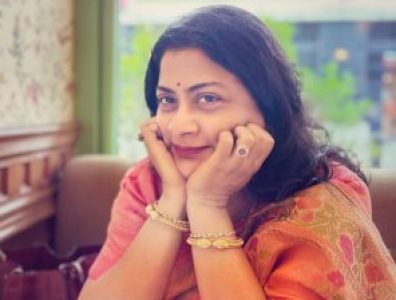A brief look at the political and socio-religious scenario that led up to the 16th century Hindu revivalism under Sri Chaityna With the start of the Muslim invasions from the end of the 12th century and the subsequent settling down of these invaders in Bengal marked a sharp breakaway from the past within the socio-cultural…
Category: heritage
Photodocumenting Museum Sculptures I – Coochbehar Palace Museum (newly renovated)
All photos by Anirban Sarkar (if images are downloaded and shared, please give his name as reference) Surya, 10th c. CE Navagraha panel, 10th c. CE 4 armed Devi, 9th -10 c. CE Fragmentary remains of a likely Vishnu Stele, at the two sides are Devis Lakshmi and Saraswati, 11-12th c. CE remains of ornametal…
Taking a look at the Devi images on seals and other artefacts from the Harappan times to the Gupta era in Hindu Iconograpy
Hindu temple iconography is a difficult subject. It takes a lot of reading and understanding of the philosophies behind the symbolism to get at the basics. Then of course there are the varying interpretations of each symbolism as per the philosophy one tends to believe in. There’s a saying in Bengali : joto mot, toto…
Devi sakti and Durga in her two main forms: Katyayani and Mahishasuramardini
Listen, O Devi, I will speak concisely of the essence of yoga. The body resembles a tree, with the root above and the branches below. In the macrocosm there are tirthas (bathing places) which also exist in the body. The macrocosm is like the microcosm. ~ Todala Tantra, II Liberation comes from knowledge of self. ~ Kaula Upanishad Within…
The various Durga-Mahishasuramardini pratimas as seen through the ages – a pictorial depiction
The ugra aspect of the devi is best characterised by her Mahishasuramardini image, which has been depicted in various ways over the centuries. The Vedic text such as Vajasaneyi Samhita, Taittiriya Aryanaka, Kena, Mundaka Upanishads, Sankhayana grihasutras mention Durga in her various forms; the soumaya (quiet/placid) forms among them being that of Gauri, Parvati, etc….
Mudras and Postures seen in Indian Iconography
Studying the murtis created in the past helps in understanding a great deal of the social history of that times, and the local cultures from where the murtis originated. The dress, jewellery, weapons, etc., depicted on a murti is a direct reflection of what was in vogue among people living in that era. Varahamihira in…
Shiva- the conqueror of Time and Death
Aum Tryambakam yajaamahe sugandhim pushtivardhanam | Urvaarukamiva bandhanaan-mrityormuksheeya maamritaat || One among the most influential gods in Hinduism, Shiva is a part of the old Hindu triad, and his followers are cumulatively known as Saivites, although there are many sects within it. While Shiva is associated with the act of destruction (Samhara) or dissolution (Pralay)…
Yaksha
The demi gods/ accessory deities or the Vyantara devatas With the rise of the element of bhakti during the early stages of religious worship (Varuna is the first to have been portrayed as the Vedic moral god, associated with the concept of sin, faith, and divine forgiveness; thus sowing the seeds of bhakti in Indic…
Worship of the Naga or Serpent Worship
The Naga worship or Serpent worship ( also known as Ophiolatry ) is among the oldest and most widespread forms of religious practices in that the world. In the minds of the early men there were a fear of the nature and powerful animals, with a feeling that they were stronger and wiser than him,…
Documenting the worship of Rama in Bengal history
The curious case of Rama in West Bengal Mahakavi Krritibas Ojha (1381–1461), a well known poet from Bengal, was the author of “Sri Rampanchali,” the Bengali version of the Sanskrit Ramayan. While he had largely changed the narrative of Valmiki’s Ramayan and made many additions of his own (making Ram quite different from the original…
